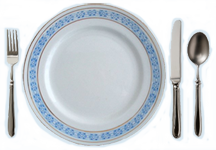Sign Up For Our
Monthly Newsletter
View our
newsletter archive

The Cocktail Post
cocktail recipes.
The Butcher's Block
The Kitchen Table

resident foodie, is cooking up
in her home kitchen.
Recent posts:
- Spiced Roasted Cashews (Masala Kaju)
April 25, 2024 - Neer Dosas
April 17, 2024 - Vada Pav
April 10, 2024 - Punjabi Samosas
April 3, 2024 - Greek Meatball Sheet Pan Dinner
March 27, 2024 - Dolmades
March 20, 2024 - Loukoumades
March 13, 2024
